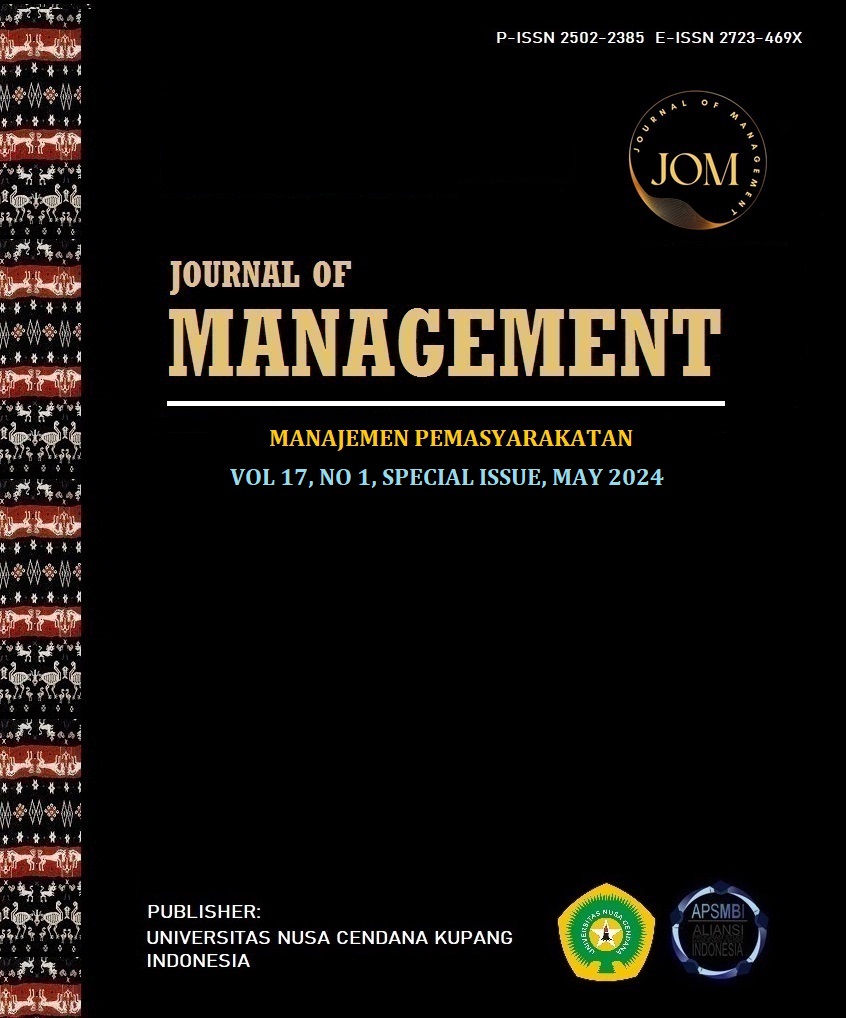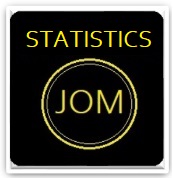PENGARUH HARGA DIRI (SELF-ESTEEM) TERHADAP RESILIENSI ANAK BINAAN DI LPKA KELAS I KUTOARJO
Abstract
Self-esteem and resilience are two psychological concepts that can influence each other, especially in correctional foster children. In this context, self-esteem refers to the level of self-esteem or confidence of correctional foster children in their own abilities and self-worth, while resilience refers to the ability of fostered children to overcome challenges, pressures, or trauma and recover well. This study was conducted with the aim of determining the influence of Self-Esteem on the Resilience of Assisted Children at the Kutoarjo Class I Special Child Development Institute. The research method used is a quantitative research method using primary data from questionnaires distributed through non-probability sampling techniques with saturated sampling or total sampling to all Assisted Children at the Special Development Institute for Class I Children in Blitar as many as 80 people. The questionnaire contains 50 items of statements related to research variables, which are then analyzed by descriptive analysis tests, simple linear regression tests, significance tests and determination tests using the help of IBM SPSS 25 software. The results showed that there is a positive and significant relationship between Self-Esteem and Resilience in the Kutoarjo Class I Special Child Development Institute.
Keywords: Self-Esteem; Resilience; Juvenile Correctional Facility
Downloads
References
Berkeley, U. C., C, H., P, J., & N, Y. (2003). Review of Research on Educational Resilience. Diversity, 11, 1–28. http://www.cal.org/crede/pdfs/rr11.pdf
Creswell, J. W. (2009). Creswell’s appreciation of arabian architecture. https://doi.org/10.1163/22118993-90000268
Eley, D. S., Robert Cloninger, C., Walters, L., Laurence, C., Synnott, R., & Wilkinson, D. (2013). The relationship between resilience and personality traits in doctors: Implications for enhancing well being. PeerJ, 2013(1), 1–16. https://doi.org/10.7717/peerj.216
Everall, R. D., Jessica Altrows, K., & Paulson, B. L. (2006). Creating a future: A study of resilience in suicidal female adolescents. Journal of Counseling and Development, 84(4), 461–470.
https://doi.org/10.1002/j.1556- 6678.2006.tb00430.x
Ghufron, M. N., & Risnawita, R. S. (2010). Teori-Teori Psikologi.Pdf (P.202).
Hidayah, N., Hanafi, H., Ramli, M., & Rofiqoh. (2020). Student’s Meaning of Life Based on Resilience in New Normal Era. 508(Icite), 239–244. https://doi.org/10.2991/assehr.k.201214.243
Hidayati, N. L. (2014). Hubungan Dukungan Sosial dengan Resiliensi Pada Remaja di Panti Asuhan Keluarga Yatim Muhammadiyah Surakarta. Psikologi, 1–17.
Kimberly A. Gordon. (1997). Resilient Studaras’ Beliefs About Their Schooling Environment: A Possible Role in Developing Goals and Motivation. Paper, 112. https://eric.ed.gov/?id=ED417056
Kitab Undang-Undang Hukum Pidana (KUHP)
Masten, A. S. (2001). Ordinary magic: Resilience processes in development. American psychologist, 56(3), 227. https://doi.org/10.1037/0003-066X.56.3.227
Missasi, V., & Izzati, I. D. C. (2019). Faktor – Faktor Yang Mempengaruhi Resiliensi. Prosiding Seminar Nasional Magister Psikologi Universitas Ahmad Dahlan, 2009,433–441. Http://Www.Seminar.Uad.Ac.Id/Index.Php/Snmpuad/Article/View/3455
Muhammad, G. T. P. S. (2019). Analisis Faktor-Faktor Penyebab Anak Melakukan Tindak Pidana Narkotika. Jurnal Penelitian Pendidikan Sosial Humaniora, 4(2), 580–590. https://doi.org/10.32696/jp2sh.v4i2.348
Nuha, A. (2017). Populasi Dan Sampelر. Pontificia Universidad Catolica Del Peru, 8(33), 44.
Rahmadi. (2011). Pengantar Metodologi Penelitian. In Antasari Press.
Https://Idr.Uin-Antasari.Ac.Id/10670/1/Pengantar Metodologi Penelitian.Pdf
Richardson, G. E. (2002). The metatheory of resilience and resiliency. Journal of Clinical Psychology, 58(3), 307–321. https://doi.org/10.1002/jclp.10020
Rutter, M. (2006). Implications of resilience concepts for scientific understanding. Annals of the New York Academy of Sciences, 1094, 1–12. https://doi.org/10.1196/annals.1376.002
Setyarini, R., & Atamimi, N. (2011). Self-Esteem dan Makna Hidup pada Pensiunan Pegawai Negeri Sipil (PNS). Desember, 38(2), 176–184.
Sidabalok, R. N., Marpaung, W., & Manurung, Y. S. (2019). Optimisme dan Self Esteem pada Pelajar Sekolah Menengah Atas. PHILANTHROPY: Journal of Psychology, 3(1), 48. https://doi.org/10.26623/philanthropy.v3i1.1319
Suryana, Ms. (2012). Metodologi Penelitian : Metodologi Penelitian Model Prakatis Penelitian Kuantitatif dan Kualitatif. Universitas Pendidikan Indonesia, 1–243. https://doi.org/10.1007/s13398-014-0173-7.2
Suryabrata, S. (2000). Pengujian Signifikansi Hipotesis Nol Dalam Penelitian Psikologis. Buletin Psikologi, 8(2), 23–32.
Undang-Undang Nomor 22 Tahun 2022 Tentang Pemasyarakatan
Undang-undang Indonesia Nomor 11 Tahun 2012
Undang-Undang Nomor 35 Tahun 2014 tentang Perubahan
Undang-Undang Nomor 23 Tahun 2002 tentang Perlindungan Anak
Wong, P. T. P., Wong, L. C. J., & Scott, C. (2006). Beyond Stress And Coping: The Positive Psychology Of Transformation Paul T. P. Wong, Lilian C. J. Wong, And Carolyn Scott Citation: Human Nature, 1–26.
Wibowo, S. B. (2016). Benarkah Self Esteem Mempengaruhi Prestasi Akademik? Humanitas, 13(1), 72. https://doi.org/10.26555/humanitas.v13i1

 Gading Wisnu Murti(1*)
Gading Wisnu Murti(1*)



